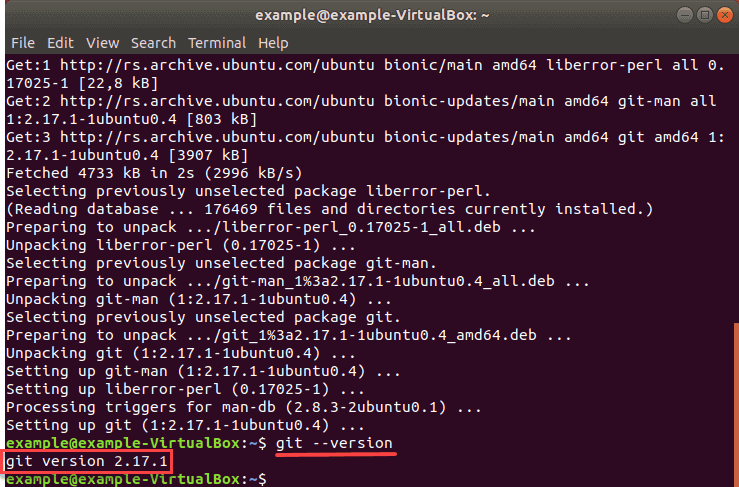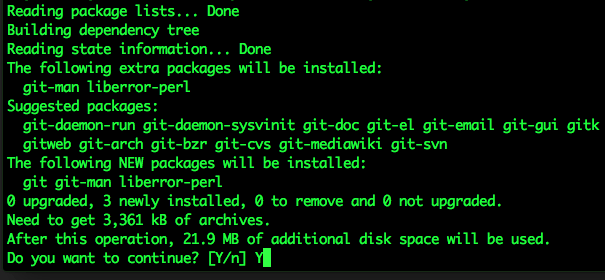
Pushes then fail if you have GitLab LFS support enabled. If you choose to use an external LFS store, You might choose to do this if you are using an appliance like a Nexus Repository to store LFS data. It is possible to host LFS objects externally by setting a custom LFS URL with git config -f. If you are storing LFS files outside of GitLab you can disable LFS on the project by setting lfs_enabled: false with the projects API.
#GIT LFS UBUNTU MANUAL#
Verify that LFS is installed locally and consider a manual push with git lfs push -all. If LFS pointers are detected, GitLab tries to verify that those files already exist in LFS on GitLab. GitLab checks files to detect LFS pointers on push. More details about various methods of storing the user credentials can be found

If you are using OS X you can use osxkeychain to store and encrypt your credentials.įor Windows, you can use wincred or Microsoft’s Git Credential Manager for Windows. This remembers the credentials for an hour, after which Git operations Git config -global credential.helper 'cache -timeout=3600' For example, if you want to upload a very large file and Let’s take a look at the workflow for checking large files into your Git If you create a merge request from the fork back to the upstream project,Īny new LFS objects in the fork become associated with the upstream project. The total object storage changes for the fork, but not the upstream project. If new LFS objects are added to the fork, To the storage used by the upstream project. When the fork is created, the LFS object storage for the fork is equal When your repository is forked, LFS objects from the upstream project are associated Your LFS object storage is the sum of the size of all LFS objects Queues a job to recalculate your project’s statistics, including storage size and.Associates the LFS object with the repository.When you add an LFS object to a repository, GitLab: Git LFS always assumes HTTPS so if you have GitLab server on HTTP you mustĪdd the URL to Git configuration manually.Any Git LFS request asks for HTTPS credentials, so we recommend a good Git.When SSH is set as a remote, Git LFS objects still go through HTTPS.Git LFS v1 original API is not supported, because it was deprecated early in LFS.

GitLab requires version 1.0.1 or later of the Git LFS client.
#GIT LFS UBUNTU INSTALL#
Install the Git LFS client appropriate for Turn on the Git Large File Storage (LFS) toggle.Expand the Visibility, project features, permissions section.On the left sidebar, select Settings > General.On the top bar, select Main menu > Projects and find your project.You must have at least the Developer role in the project.GitLab Git Large File Storage (LFS) Administration. To install Git LFS on your self-managed GitLab server, see

In the repository view, files tracked by Git LFS display an LFS badge next to the filename: Instructions on where to fetch or where to push the large file. After the request is authorized, Git LFS client receives Your Git LFS client communicates with the GitLab server over HTTPS. Larger than 1 GB to preserve performance. The general recommendation is to not have Git repositories Managing large files such as audio, video and graphics files has always been one

Git LFS uses the lazy pull and fetch for downloading the files and their different versions. But how exactly does it do it? How does Git LFS work? Git LFS which is an open-source extension of git employs some workarounds to make your git experience with large files smoother. There is some good news for you as you don’t need to do these things manually. There are some workarounds and hacks that can be used to get rid of such problems. These problems seem pretty obvious and there is no perfect solution (yet) to handle them. Larger repository means slower fetch and pulls. Frequent updating of these binary files makes the repository grow in size in a unwanted manner. Git will store the entire binary in the git history instead of just storing changes.
#GIT LFS UBUNTU UPDATE#


 0 kommentar(er)
0 kommentar(er)
